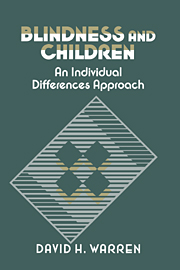Book contents
- Frontmatter
- Contents
- Preface
- Introduction
- Part I Interaction with the physical world
- Part II The acquisition of cognitive skills
- 5 Language, concept formation, and classification
- 6 Executive functions: memory, attention, and cognitive strategies
- 7 Cognitive style, creativity, and intelligence
- Part III Adapting to the social world
- Part IV Summary
- Conclusion
- References
- Author index
- Subject index
6 - Executive functions: memory, attention, and cognitive strategies
from Part II - The acquisition of cognitive skills
Published online by Cambridge University Press: 02 December 2009
- Frontmatter
- Contents
- Preface
- Introduction
- Part I Interaction with the physical world
- Part II The acquisition of cognitive skills
- 5 Language, concept formation, and classification
- 6 Executive functions: memory, attention, and cognitive strategies
- 7 Cognitive style, creativity, and intelligence
- Part III Adapting to the social world
- Part IV Summary
- Conclusion
- References
- Author index
- Subject index
Summary
We consider now a set of interrelated cognitive processes that includes memory, attention, and cognitive strategies. These “executive functions” have not received much direct research attention in the visual impairment literature, particularly that with infants and children. However, many studies, some of which we have already mentioned in previous sections, bear at least indirectly on these issues.
Infancy
Several lines of innovative research with sighted infants have revealed that the neonate's attention is “captured” by certain perceptual events, and that the neonate has little if any volitional choice about which stimuli are actually attended. Initially involuntary, attention gradually comes under a degree of voluntary control. For example, early eye fixations are entirely determined by stimulus features but become largely volitional during the first year.
Among the visual events that are particularly attention-commanding are moving stimuli, facelike stimuli, and areas within the visual field that contain a moderate degree of complexity. Moving stimuli are especially effective in eliciting visual attention. Complexity is an intriguing dimension of visual attention: the evidence supports the notion that as the infant's visual information-processing capacities develop, the infant prefers to look at progressively more complex stimulus arrays. The other sensory modalities have been far less completely studied, and the existence of analogs to these visual-developmental principles in other modalities is for the most part a hypothetical question at present.
One of the most interesting lines of recent research in early perceptual and cognitive development has been in the area of memory. The use of ingenious research methods has revealed that by at least four months, infants begin to recognize and remember perceptual stimuli that they have encountered before.
Information
- Type
- Chapter
- Information
- Blindness and ChildrenAn Individual Differences Approach, pp. 155 - 180Publisher: Cambridge University PressPrint publication year: 1994
